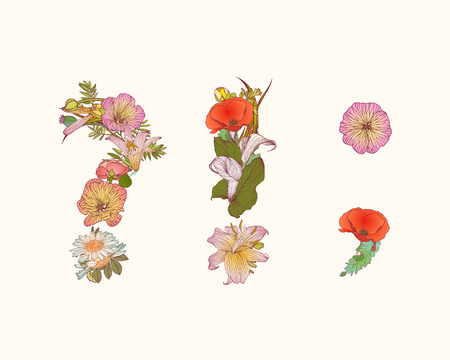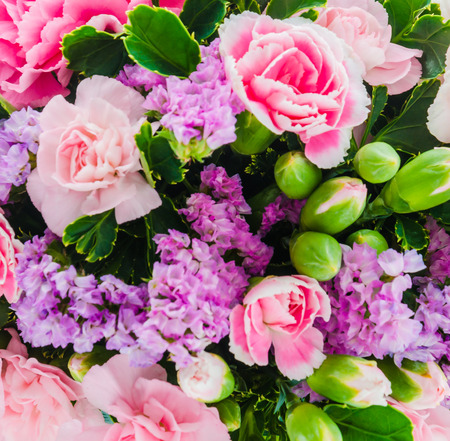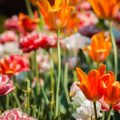Understanding the Basics of Color Theory
In the artful world of cut flower gardening, mastering color theory is essential for creating bouquets that captivate and garden beds that harmonize with their surroundings. At its heart, color theory begins with the color wheel—a tool familiar to both artists and gardeners alike. The wheel organizes colors into a spectrum, showcasing primary hues (red, yellow, blue), secondary blends (orange, green, purple), and a range of tertiary shades. By understanding this circular map, American gardeners can make intentional choices that celebrate both contrast and cohesion.
One key distinction is between warm and cool tones. Warm colors—reds, oranges, and yellows—evoke energy, sunshine, and vibrancy, making them ideal for bold statement beds or eye-catching bouquet highlights. Cool tones—blues, greens, and purples—suggest calmness and serenity, often used in tranquil borders or soothing arrangements for indoor spaces. When thoughtfully combined, these palettes create visual balance and emotional resonance.
In American garden design, these concepts underpin everything from suburban front yard beds to wildflower meadows cultivated for cutting. A deep appreciation for the interplay of color not only enhances the beauty of floral arrangements but also ensures harmony within the landscape itself. Whether your style leans modern farmhouse or classic cottage garden, grasping the basics of color theory empowers you to curate gardens and bouquets that delight the senses and reflect your unique artistic vision.
2. Choosing a Palette: Colors that Thrive Together
When designing a cut flower garden for both bouquets and visual beauty, selecting a harmonious color palette is essential. Embracing color theory allows gardeners to curate combinations that evoke classic American landscapes—from the sun-washed meadows of the Midwest to the coastal prairies of California. By considering how colors interact, you can create arrangements that feel both intentional and effortlessly natural, echoing the relaxed sophistication of American garden design.
Finding Inspiration in Naturalistic Planting
Naturalistic planting styles—popular in contemporary American landscape design—favor color palettes that mimic nature’s effortless blends. Think of wildflower fields in early summer, where soft blues mingle with buttery yellows and vibrant magentas. When planning your cut flower beds, draw inspiration from these scenes to select varieties that thrive together both visually and horticulturally.
Classic Color Combinations for Cut Flower Gardens
| Palette Inspiration | Main Colors | Suggested Flowers |
|---|---|---|
| Midwest Prairie Meadow | Golds, Soft Blues, Creamy Whites | Black-eyed Susan, Bachelor’s Button, Shasta Daisy |
| East Coast Woodland Edge | Burgundy, Deep Green, Pale Pink | Peony, Foxglove, Ferns (for foliage) |
| California Coastal Mix | Cobalt Blue, Orange, Silver-Green | Delphinium, California Poppy, Dusty Miller |
| Southern Charm Garden | Creams, Peach, Coral | Zinnia, Cosmos, Snapdragon |
The Art of Layering Tones and Textures
A successful bouquet—or garden bed—is rarely about bold colors alone. It’s about layering tones and mixing textures. Pair cool hues like lavender or sky blue with warm oranges or corals for vibrancy reminiscent of an American sunset. Add silver-foliaged plants as a neutral anchor or accentuate pastels with rich burgundies for depth. By weaving together different shapes and forms—spikes of salvia with rounded dahlias or airy cosmos—you’ll create dynamic arrangements that look freshly gathered from nature itself.

3. Seasonal Color Combinations for Bouquets
One of the most enchanting aspects of cut flower gardening in America is the ability to capture the spirit of each season through color-rich bouquets. By embracing seasonal blooms and local favorites, you can create arrangements that not only celebrate nature’s cycles but also tell a story unique to your region and climate. In spring, think about soft pastels—blush tulips, creamy daffodils, and sky-blue forget-me-nots—to evoke a fresh, optimistic mood. These gentle palettes reflect the season’s promise and pair beautifully with emerging greenery.
As summer arrives, gardens burst into vibrant life. Harness this energy by combining bold sunflowers, fiery zinnias, and electric blue delphiniums. Play with complementary colors like orange and blue or red and green to achieve high-impact arrangements that radiate warmth and abundance—a classic reflection of American summer gardens.
Autumn brings a shift toward rich, warm tones: deep burgundy dahlias, golden rudbeckias, and rust-hued chrysanthemums offer a sophisticated palette reminiscent of harvest festivals and Thanksgiving gatherings. Layer these with foliage in amber and bronze to create bouquets that echo the changing landscape.
Even winter has its floral treasures. Evergreens, holly berries, and crisp white paperwhites can be arranged for a clean, serene aesthetic that mirrors snowy vistas or holiday traditions. Adding touches of silver foliage or dried elements brings texture and interest during the quieter months.
By thoughtfully selecting flowers according to what’s in season locally—and pairing them using principles from color theory—you ensure that every bouquet feels both intentional and rooted in its time and place. This approach not only enhances visual harmony but also strengthens your connection to the rhythms of your garden and community.
4. Designing Garden Beds for Cutting and Curb Appeal
When planning a cut flower garden that also elevates your home’s curb appeal, it’s essential to blend artistry with practicality. American gardening trends favor landscapes that are both beautiful to behold and functional for harvesting fresh bouquets. By applying color theory, you can create garden beds that look harmonious year-round and supply a steady stream of flowers for indoor arrangements.
Blending Form and Function
Start by considering the layout of your garden beds. Raised beds or border plantings along walkways and driveways are popular in U.S. neighborhoods because they maximize growing space while framing your property with color. Use wide beds (at least 3-4 feet) so you have room for multiple rows—this allows for succession planting and easy access for cutting stems without trampling other plants.
Color Groupings for Visual Impact
Applying color theory means grouping flowers by complementary or analogous colors to achieve either bold contrast or soothing harmony. For example, pair warm oranges and yellows (like zinnias and sunflowers) with cool blues and purples (such as delphiniums or salvia) for a vibrant look that stands out from the street. Alternatively, a pastel scheme using blush pinks, creams, and soft lavenders gives a romantic, cohesive vibe that’s trending in many American suburban gardens.
Sample Color Combinations for Garden Beds
| Color Scheme | Main Flower Types | Visual Effect |
|---|---|---|
| Bold & Contrasting | Zinnia (orange), Sunflower (yellow), Delphinium (blue) | Energetic, eye-catching |
| Soft & Harmonious | Dahlia (peach), Cosmos (white), Larkspur (lavender) | Calm, unified, elegant |
| Patriotic Palette | Poppy (red), Shasta Daisy (white), Bachelor’s Button (blue) | Classic American charm |
Succession Planting and Layering
To keep your beds productive through the seasons, practice succession planting: sow new seeds every few weeks so you always have fresh blooms. Layer taller varieties toward the back or center of island beds, medium-height in the middle, and shorter or trailing plants at the front edge. This not only maximizes sunlight exposure but also creates dynamic visual depth—a technique beloved by landscape designers nationwide.
Tying It All Together
The best American cut flower gardens blend beauty with utility by using thoughtful design principles rooted in color theory. Whether your style is modern farmhouse or classic cottage, plan your beds with an eye toward both outdoor aesthetics and indoor floral abundance. The result? A garden that wows neighbors while filling your vases all season long.
5. Creating Focal Points and Layers with Color
If you want your cut flower garden to truly pop—both in the landscape and in your vases—mastering the art of focal points and layering through color is essential. Think of your garden beds and bouquets as living paintings, where strategic color placement draws the eye and sets the mood, echoing that signature American blend of wild beauty and intentional design.
The Power of Bold Blooms as Focal Points
Focal points are the stars of your show: those bold, captivating flowers that instantly catch attention. In American cut flower gardens, sunflowers, dahlias, or peonies often take center stage, their saturated hues standing out against more subdued backgrounds. Use vibrant reds, sunny yellows, or deep purples sparingly but purposefully—position them at prime spots in your beds or bouquets to guide the gaze and create visual excitement.
Supporting Cast: Soft Hues for Layering
No bouquet or bed is complete without its supporting actors. Softer shades—blush pinks, creamy whites, sage greens—provide a gentle backdrop that allows focal blooms to shine. These layers add depth and texture, echoing natural meadows found across the American countryside. Layer these subtle tones both vertically in your garden (from low-growing fillers to tall spires) and horizontally within arrangements for that lush, full look beloved by designers.
Tips for Artful American Garden Charm
Unlocking the secret to an artful display lies in contrast and cohesion. Pair bold, native favorites like Black-eyed Susans with feathery grasses or pastel cosmos. Use repetition of accent colors throughout beds to unify the space while avoiding monotony. Whether you’re arranging a vase for your kitchen table or designing sweeping borders outdoors, always balance statement-makers with a symphony of softer supporting blooms for that effortless American charm.
6. Translating Garden Color to Vase Arrangements
Bridging the vibrant world of your cut flower garden with the artistry of indoor bouquets is where true color mastery shines. The transition from sunlit beds to tabletop arrangements can pose challenges, but with thoughtful techniques, you can carry your outdoor color story straight into your home. Below are some expert tips for ensuring your garden’s palette translates seamlessly into stunning vase displays.
Harvesting with Color Harmony in Mind
Begin by harvesting blooms when their colors are at their peak, paying close attention to complementary and analogous hues that already work together in the landscape. Stagger picking times so that both focal and filler flowers are available together, allowing you to recreate the garden’s layered effect indoors.
Grouping for Visual Impact
Incorporate the principles of repetition and balance found in successful garden beds. Group similar colors or shapes in clusters within your vase for a look that feels intentional and natural—think of how colors drift and repeat across your borders, and echo that rhythm on a smaller scale.
Playing with Texture and Foliage
Don’t overlook the supporting cast: foliage and textural elements help ground your bouquets just as they do in the garden. Use greenery like eucalyptus, ferns, or even ornamental grasses to create contrast and fill negative space, bringing depth and cohesion to your arrangement.
Adapting Outdoor Light Effects Indoors
The way sunlight interacts with petals outdoors can be hard to replicate, so consider placing arrangements near natural light sources or using clear vases to let stems play with illumination. If desired, use mirrors or light-colored backgrounds to amplify the bouquet’s vibrancy, much as open skies do in your garden.
Cultural Cues: American Style Arrangements
For a distinctly American aesthetic, embrace an easy elegance—think farmhouse mason jars, vintage pitchers, or classic glass cylinders. Let arrangements feel abundant but not overly formal; asymmetry and a bit of wildness reflect the laid-back beauty often celebrated in U.S. homes. Above all, let each bouquet tell the color story that began outdoors—a living piece of your garden’s beauty brought inside.


